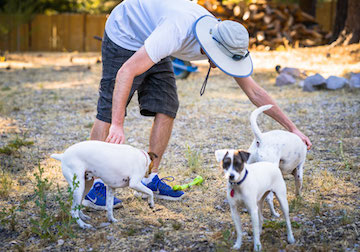7 Easy Facts About Meaning, Stages And Forming An Effective Team Described
: The mechanics of intergroup interaction, decision-making, and liability are concurred upon and handled successfully. Nearly all groups do not have one or even more of these requirements at some time in their period. Team development aims to satisfy these requirements with recurring representation and development. Like any type of kind of growth, it takes some time and commitment to be efficient.
As the genuine job begins, the project might provide both technological and social difficulties. Private job practices, leadership decisions, or lapses in interaction can create stress within a group. Nuisance, irritation, and anxiousness commonly emerge in action. This phase of team development is referred to as storming. Storming is the most hard and unproductive of the 5 stages of growth, yet it is nevertheless essential to the team development procedure.
With this info, the team can start aiming to a much better team dynamic. The norming phase of team development is the calmness after the tornado. In this phase of team development, staff member drop into a rhythm as a cohesive taskforce. The abilities of each member are verified and used to carry out the required jobs.
7 Easy Facts About Meaning, Stages And Forming An Effective Team Described
The team can manage dispute and wage the project effectively. Some groups reach a phase of growth in which they prosper at their individual and collective jobs. The abilities of each member are fully maximized, guidance is practically never needed, and members really feel a strong feeling of rely on each other.
Getting to the doing phase is a significant success and often precipitates some kind of team learning. Group finding out is a behavioral procedure of seeking, celebration, talking about, and applying methods of team success. Whether with training, group initiative, or cutting-edge leadership, team learning is an action step that makes sure healthy team development.
Learning Outcomes Describe the 5 stages of team development. Discuss how team norms and cohesiveness influence performance. Introduction Our discussion so much has focused mostly on a group as an entity, out the people inside the team. This is like defining an automobile by its model and color without considering what is under the hood.
7 Easy Facts About Meaning, Stages And Forming An Effective Team Described
In groups, the inner characteristics are the individuals in the team and how they interact with each other. For groups to be efficient, the individuals in the team have to be able to work with each other to add jointly to team outcomes. This does not happen instantly: it develops as the team works with each other.
Phases of Team Development This procedure of finding out to work with each other successfully is referred to as team development. Research has revealed that groups experience clear-cut stages during growth. Bruce Tuckman, an instructional psychologist, determined a five-stage growth procedure that the majority of groups comply with to come to be high doing. He called the stages: creating, storming, norming, doing, and adjourning. artificial intelligence.
A lot of high-performing groups experience 5 stages of team development. Developing phase The creating phase entails a period of alignment and getting acquainted. Unpredictability is high during this phase, and individuals are trying to find leadership and authority. artificial intelligence. A participant who asserts authority or is experienced might be sought to take control.
7 Easy Facts About Meaning, Stages And Forming An Effective Team Described
Group performance increases during this phase as members find out to coordinate and start to concentrate on team objectives. Nevertheless, the consistency is perilous, and if disputes reappear the team can glide back into storming. In the doing phase, agreement and teamwork have actually been well-established and the team is mature, arranged, and well-functioning.
-
Issues and conflicts still emerge, yet they are handled constructively. (We will certainly review the duty of dispute and dispute resolution in the following section). The team is focused on trouble solving and fulfilling team objectives. In the adjourning phase, most of the team`s objectives have actually been achieved. The focus is on concluding final jobs and recording the effort and results.
There might be regret as the team ends, so a ceremonial acknowledgement of the job and success of the team can be helpful. If the team is a standing committee with recurring responsibility, members might be changed by new individuals and the team can go back to a creating or storming phase and repeat the growth procedure.
7 Easy Facts About Meaning, Stages And Forming An Effective Team Described
Group norms set a standard for actions, mindset, and performance that all staff member are anticipated to follow. Norms are like regulations yet they are not listed. Rather, all the staff member implicitly comprehend them. Norms are efficient due to the fact that staff member wish to support the team and protect connections in the team, and when norms are breached, there is peer pressure or sanctions to implement conformity.
 7 Easy Facts About Using The Stages Of Team Development – Mit Human Resources Described
7 Easy Facts About Using The Stages Of Team Development – Mit Human Resources Described
Initially, during the creating and storming stages, norms concentrate on expectations for presence and commitment. Later on, during the norming and doing stages, norms concentrate on connections and degrees of performance. Performance norms are extremely vital due to the fact that they specify the level of job effort and standards that figure out the success of the team.
Norms are just efficient in regulating actions when they are approved by staff member. The level of on the team primarily identifies whether staff member approve and adapt norms. Group cohesiveness is the extent that members are attracted to the team and are inspired to stay in the team. artificial intelligence.
7 Easy Facts About Meaning, Stages And Forming An Effective Team Described
They attempt to adapt norms due to the fact that they wish to preserve their connections in the team and they wish to satisfy team expectations. Groups with strong performance norms and high cohesiveness are high doing. For example, the seven-member executive team at Whole Foods hangs out with each other outside of job. Its members regularly socialize and also take group getaways.
Houston development programs
You do not have to gain superpowers from a serum or create one of the most famous brand names of your generation to be a wonderful leader. Overview your team with each phase of the procedure with the following tips:1. Establish a clear function and mission and revisit it throughout the procedure.
It is the framework that will certainly aid you make decisions. It provides you direction. Without it, you`ll go nowhere. People obtain so lost in a particular task that they neglect why they are doing it to begin with. It is simple to shed sight of the “huge image”. Groups require a clear function and mission and ought to be advised of them often.
7 Easy Facts About Meaning, Stages And Forming An Effective Team Described
Establish guideline and see to it they are followed. Policies might not seem enjoyable, yet they clean up confusion. Without them, no person will certainly recognize what is considered appropriate actions. Everybody will certainly have their very own “style” of doing things. Teams without regulations are disjointed, susceptible to dispute and inefficient. One of the initial jobs that groups ought to do is develop guideline.
Some instances are:- Don`t interrupt one more member when they are speaking. Switch off your phone during working conferences. Track your time transparently with Toggl Track. Create a regular job strategy with jobs and share it with the team. Bear in mind that regulations are created to aid your team stay focused on what matters mostperformance.
-
Let other members act as leaders or facilitators. Every team needs to have a facilitatora individual who leads and guides conferences and discussions. Someone who drives the group towards a common objective. As a company creator or supervisor, you might be the marked team leader. That doess not imply you ought to constantly be the one leading.

